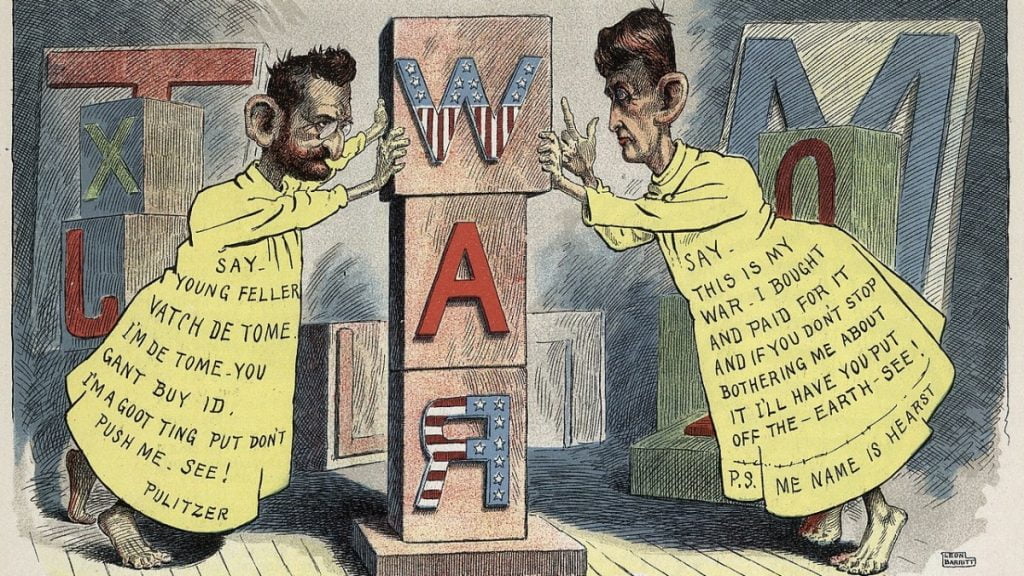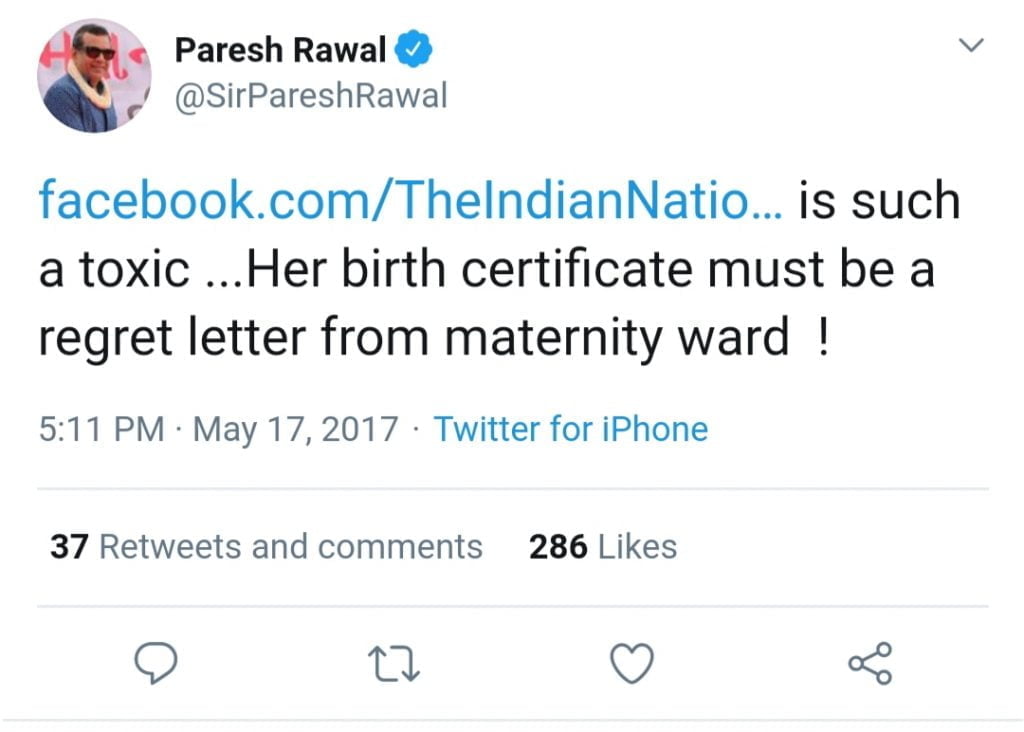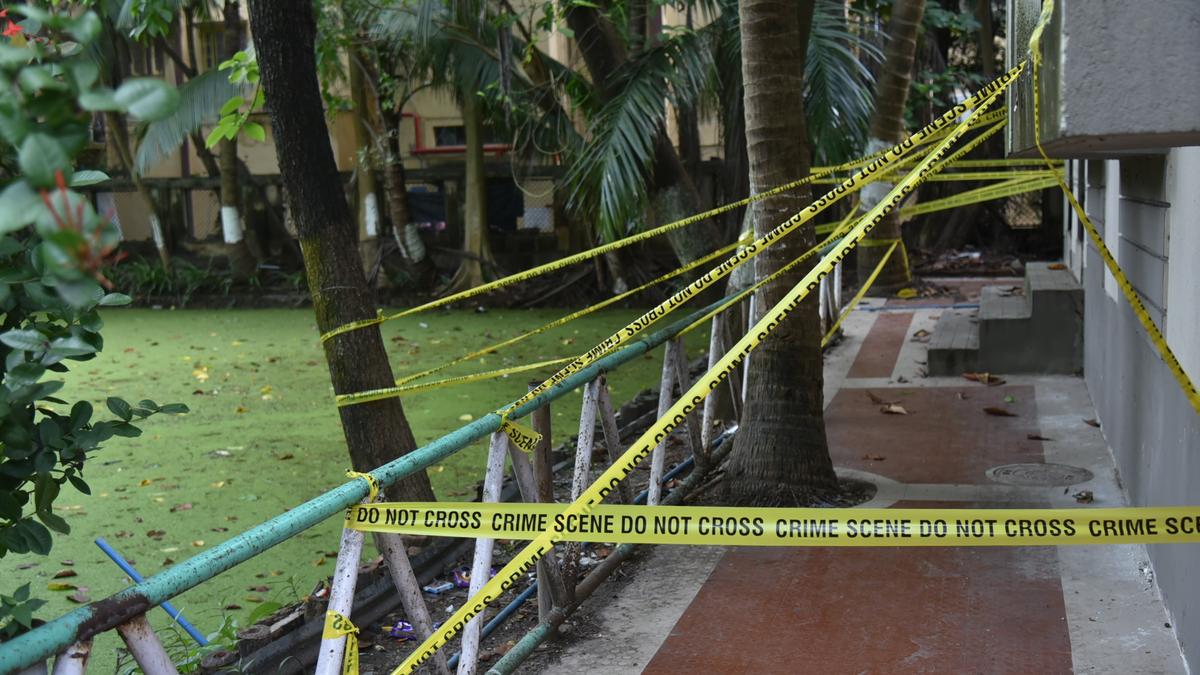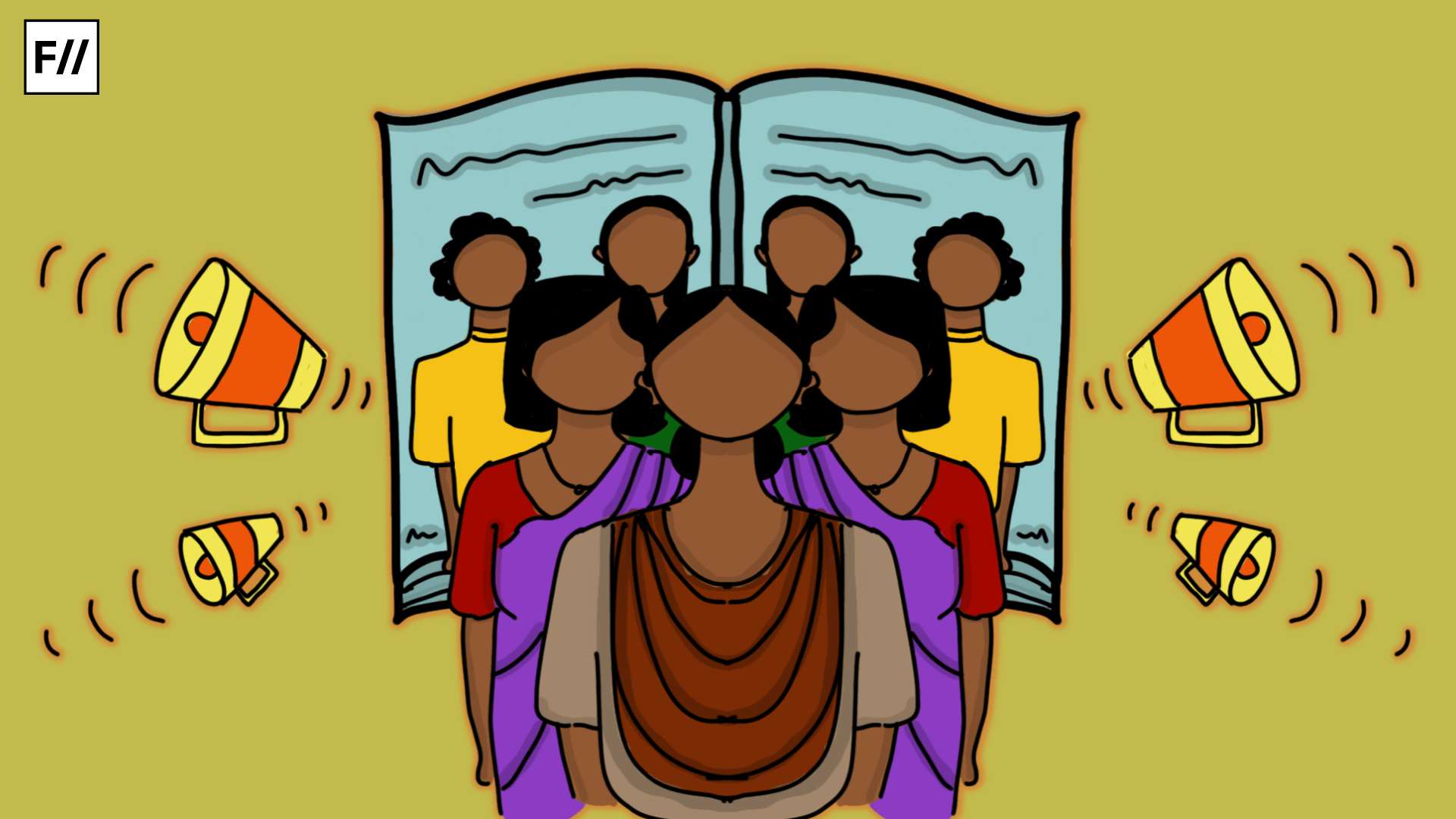Remember when after demonetisation in 2016 Zee News’ Sudhir Chaudhary claimed that the 2000 rupees note which was released by RBI contained a nanochip to trace black money? This argument was later used to attack those who talked about the repercussions that had to be borne by the Indian economy because of the move. Or more recently when many of the mainstream media houses ran stories vilifying the entire Muslim community for spreading COVID-19 deliberately based on an event organised by Tablighi Jamaat in Delhi? Both these claims were later debunked by various fact-checking groups as ‘fake news’ intended to create a particular narrative to suit the agenda of the current regime.
The journey of fake news is longer than we think and those who are targeted by it continue to be traumatised and stigmatised as the digital and print media platforms rarely put an effort to offer public apology to lessen the harm done by running such news reports. Media, for a long time now, has been hailed as the fourth pillar of any democracy’s foundation because of its major influence in shaping public consciousness so that the masses can take well-informed decisions; this also means that media for most parts must enjoy a high level of freedom of the press in the form of tolerance from the viewers’ side and an assurance of safety from the State along with a work ethic that doesn’t allow for any tampering with the ‘truth’ as an act of appeasement.
Fake news is more complicated and at times is propagated for more dangerous reasons than just to increase business. It is not just reporting something which has not happened but also completely ignoring reportage around what is happening by either choosing to not talk about that issue or sensationalising another story to deviate attention.
The last decade saw a tremendous rise in the number of internet users, the spread of fake news and a global inclination towards the political right and there is hardly a doubt about the existence of collaboration among these three. In an age of information, where the media is competing to create a never-ending cycle of breaking news and consumption rates have spiked like never before, the quality of the research that goes in news reporting as well as its consumption is bound to suffer. Fake news is more complicated and at times is propagated for more dangerous reasons than just to increase business. It is not just reporting something which has not happened but also completely ignoring reportage around what is happening by either choosing to not talk about that issue or sensationalising another story to deviate attention.

History of Fake News
“The age of post-truth, stretches as far back as you care to look, there never has been a golden age of transparency,” writes Steven Poole in an article for The Guardian busting the myth that fake news is a by-product of the internet. In 1890s, the U.S.A. was gripped by a kind of journalism that included sensational headlines and false claims including scandals and expose, which led to a successful increase in the profit margins – known as “yellow journalism“.

The most common words like “misinformation” refer to falsehood spread accidentally and deliberately and ‘disinformation’ is put out in the world to deceive the ones it is received by. The origin of the word ‘disinformation’ can be traced back to dezinformacija, a Russian word used frequently in the early cold war years to spread political rumours and influence public opinion.
In 2016, Buzzfeed’s media editor, Craig Silverman came across websites that solely published made-up stories and started researching for more such stories right before the US elections started using ‘fake news’ to refer to those stories at various platforms. Even though the terminology ‘fake news’ has been in use for more than a century, it entered our common vocabulary very recently maybe because the rate and magnitude of its dissemination were not that influential in those times.
The Broadening of Feminism’s Horizon And Why Fake News Matter To Them
Indian Feminist movement initially was concerned with the issues faced by the upper caste Hindu women like that of Sati, widow remarriage etc. Just like its counterpart in the West which started engaging in issues more than just of white women’s, after Black Feminist scholar Kimberle Crenshaw (1989), theorised the concept of ‘intersectionality’ which recognises that women are not a homogeneous group and that the identities like race, gender, class leads to power for some and oppression for the others. Dr B.R. Ambedkar brought the question of caste interlinked with that of class, gender and religion which was later further nuanced by Dalit Feminist scholars.
Both Mathura Rape Case and Shah Bano alimony case became important turning points in the history of Indian Feminist Movement as the question of caste and religion along with gender occupied the mainstream discourse along with the failure of the legal system to safeguard the rights of the marginalised. The movement since then has fought for the rights of women, LGBTQ, Dalits, Muslims, poor, disabled people, elderly people, refugees and children and since ‘fake news’ is mostly causing harm to those who are already vulnerable, it becomes an issue that is bound to bother the feminists.
Also read: The Rise of Fake News And What It Means Today
A Never-Ending List of Fake News
We don’t have to dig deeper or go back to many years before to make a list of fake news that had a tremendous influence on public sentiments and led to selective targeting. Here are two of the most recent ones.
1. The absence of reporting of human rights violations and the intensified tension and complete communication blackout in Jammu & Kashmir after the abrogation of Article 370 in August, last year and the efforts made by news channels to establish Center’s narrative to development and normalcy in the valley is nothing but fake news.
2. A few months after the Delhi police brutally attacked and sexually harassed the students by entering into the hostels, libraries, washrooms in Jamia Milia Islamia in Delhi, several media houses ran a clip claiming that a particular student was carrying stones and that there were many like him, to prove that the police violence was retaliation and not an independent action which later turned out to be a brown wallet.
The News Minute founder, Dhanya Rajendran, said that, “In India, women who are in the public space and are opinionated, always face a bigger threat than men who are opinionated in the public space. So even when it comes to circulating fake news, they are at the receiving end (Picture of trolls and threats).” We see a reflection of that when author Arundhati Roy, journalist Rana Ayyub, or JNUSU president Aishe Gosh get trolled and receive rape and death threats for occupying the hyper-masculine political spaces.

What Are the Social Media Platforms Doing About it?
There have been ample observations about the inefficiency and reluctance from most of the social media platforms in India to work in the direction of curbing the reach of fake news. We also find that the government has been deliberately ignoring the dangerous form that fake news has taken in India in the wake of this wave of hyper-nationalism and Islamophobia since 2014. Before the last general elections, nothing substantial was done to target misinformation that was fed to people in order to influence the election results except for vague guidelines that the Election Commission gave for the removal of “inflammatory content”.
We also find that the government has been deliberately ignoring the dangerous form that fake news has taken in India in the wake of this wave of hyper-nationalism and Islamophobia since 2014. Before the last general elections, nothing substantial was done to target misinformation that was fed to people in order to influence the election results except for vague guidelines that the Election Commission gave for the removal of “inflammatory content”.
Twitter has started adding a warning or explanation for the posts that have some information with untraceable authenticity. Many reports show that the right-wing fundamentalists used WhatsApp to organize and execute the pogrom against Muslims in East Delhi earlier this year and it becomes almost impossible to trace back such sources due to the end-to-end encryption that the app offers. Very recently, in an investigative journalism piece published by the Washington Post, it was revealed that Facebook, ignored hate-speech rules for BJP’s anti-Muslim posts. These accounts show that the social media has time and again, intentionally enabled such propapganda by the ruling regimes.
There have been claims by those who worked with the BJP IT cell (think of OpIndia, Swarajya etc.) that the party also runs a WhatsApp campaign where groups are made based on personal information of the voters such as caste, gender etcetera and false information is shared to appease and increase the vote bank. The current chief of its IT cell, Amit Malviya with a huge social media following, has on several occasions spread false news. The reality is grim but we can still hold some hope in various dedicated fact-checkers initiatives such as Alt News, WebQoof by The Quint, The Wire and certain news channels that are regularly targeted but still remember to do their primary job of antagonising the state.
Also Read: The Farrago Of Biased And Fake News: Media’s Role Before Lok Sabha Elections
Laws and Policies Around Fake News in India
India has no specific law that targets ‘fake news’ in its contemporary form but a few laws discuss the issue of disinformation and have prescribed punishments for the same.
One such law is Section 505(1)(b) of the Indian Penal Code (IPC) addressing the issue of spreading lies and mischievous content that leads to “fear or alarm to the public” or induces anyone to commit a crime against the State or another person or disturb the public peace.
We also have a provision in Section 54 of the Disaster Management Act (DMA), 2005 and it deals with “false alarm or warning as to disaster or its severity or magnitude, leading to panic.” And this becomes more relevant in times of COVID-19 when people are anxious and accessing the internet way more than before, due to a digital shift in work and education, and the chance to encounter fake news pieces suggesting all kinds of remedies for the virus or perhaps another interview by Baba Ramdev where he might claim to have found a cure for mortality, is high.
Can There be Feminist Solutions to “Fake News”?
The scepticism that feminists apply to everything that is presented as “truth” has become a necessity while we battle this “infodemic,” as Dustin Carnahan would say. The hegemony of those in power in the creation of any narrative is not new. A solution to disinformation can never be seen in the promotion of “facts” because history shows that the epistemological basis of knowledge is often informed by biases. Think of how biological essentialism was widely accepted as factual knowledge to defend gender roles but we realize that truth is dynamic and perspective.
However, listed below are few ways to tackle and challenge such dissemination of misinformation, which might, to whatever extent possible, be able to subdue targeted, anti-minority propaganda.
- We as feminist readers of ‘news’ must always try to locate any ‘news’ within its historical and socio-political context. Sadly, it doesn’t end there.
- We must try to find out who is being targeted (if at all) by that news. Are these minorities? Do these people hold a lower position in the hierarchy of power? Do we get their side of the story?
- We must also try to look at the general political stance and the authenticity of the reports that a channel or a social media platform might have run in the past.
- Any news about those who are in a conflict against the state must undergo scrutiny, so does anything which attempts to incite violence and follows a communal line.
- Most importantly we must realize that there will always be issues that escape our awareness. It is important to not be ignorant but never at the cost of being tricked into believing fake news.
It’s okay to not read every piece of news that exists in the universe. We get you. We are you.
About the author(s)
Aparna is a post-grad student of Women's Studies at TISS, Hyderabad. When she is not talking about intersectional politics and re-reading The God of Small Things, she can be found listening to Mehdi Hassan while she pets cats and collects yellow flowers.




